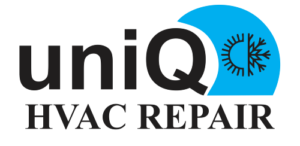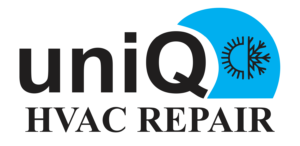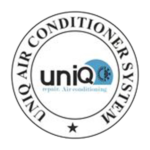AC Drain Line Cleaning: Preventing Costly Downtime and Water Damage
Air conditioning (AC) systems are essential for maintaining indoor comfort, especially during hot and humid weather. While these systems provide welcome relief, they also produce condensate that must be efficiently drained away. Over time, AC drain lines can become clogged, leading to problems such as reduced cooling efficiency, water damage, and even mold growth. In this comprehensive guide, we will explore AC drain line cleaning, its importance, common signs of clogs, do-it-yourself cleaning methods, when to seek professional help, and preventive measures to keep your AC system running smoothly. By understanding AC drain line cleaning, you can ensure your system remains efficient and your indoor space comfortable.
Table of Contents
- The Significance of AC Drain Line Cleaning (200 words)
- Importance of maintaining drainage
- Preventing water damage and mold growth
- Enhancing AC system efficiency
- Avoiding costly repairs and downtime
- Common Signs of AC Drain Line Clogs (250 words)
- Water leaks or pooling around the indoor unit
- Reduced cooling efficiency
- Unpleasant odors
- Mold or algae growth
- Increased humidity indoors
- The Importance of Regular Drain Line Maintenance (300 words)
- Understanding condensate production
- How drain lines become clogged
- Risks associated with neglected maintenance
- The benefits of a clean drain line
- DIY Methods for Cleaning AC Drain Lines (400 words)
- Step 1: Locate the Drain Line
- Step 2: Turn Off the AC System
- Step 3: Gather Supplies
- Step 4: Remove the Drain Cap or Plug
- Step 5: Use a Wet/Dry Vacuum
- Step 6: Flush the Drain Line
- Step 7: Repeat if Necessary
- Step 8: Replace the Cap or Plug
- When to Seek Professional AC Drain Line Cleaning (250 words)
- Severe clogs or blockages
- Inaccessible drain lines
- Lack of DIY equipment or expertise
- Signs of mold growth or water damage
- Preventive Measures for AC Drain Line Maintenance (200 words)
- Regular visual inspections
- Changing air filters
- Scheduling professional HVAC maintenance
- Installing a condensate pump and safety switch
- Conclusion (100 words)
- The critical role of AC drain line cleaning in system efficiency
- The value of regular maintenance and timely issue resolution
- Ensuring a comfortable and dry indoor environment for years to come
1. The Significance of AC Drain Line Cleaning
Air conditioning systems are a lifeline during hot and humid weather, providing comfort by cooling indoor spaces. However, these systems produce condensate as they operate, which must be efficiently drained away. Understanding the significance of AC drain line cleaning is crucial for maintaining your system’s efficiency and preventing costly issues. Consider the following factors:
Importance of Maintaining Drainage: Proper drainage is essential to prevent water buildup in your AC system. A clogged drain line can result in water leaks, reduced efficiency, and even water damage.
Preventing Water Damage and Mold Growth: A clogged drain line can cause water to overflow, leading to water damage to your property and creating ideal conditions for mold and algae growth.
Enhancing AC System Efficiency: A clean drain line ensures that the condensate is efficiently removed, allowing your AC system to operate at its full potential, resulting in optimal cooling and energy efficiency.
Avoiding Costly Repairs and Downtime: Neglected drain lines can lead to costly repairs, system downtime, and discomfort for occupants.
Understanding the significance of AC drain line cleaning empowers homeowners to take proactive measures to ensure their systems remain efficient and trouble-free.
2. Common Signs of AC Drain Line Clogs
Recognizing common signs of AC drain line clogs is crucial for prompt intervention. Here are some indicators that your AC drain line may be clogged:
Water Leaks or Pooling Around the Indoor Unit: If you notice water pooling around the indoor unit or water leakage, it may indicate a clogged drain line.
Reduced Cooling Efficiency: A clogged drain line can lead to reduced cooling efficiency as excess moisture accumulates in the system.
Unpleasant Odors: Stagnant water in the drain line can lead to foul odors emitting from the AC system.
Mold or Algae Growth: Visible mold or algae growth around the indoor unit or in the drain line is a clear sign of a clog.
Increased Humidity Indoors: A clogged drain line may cause excess humidity indoors, making the environment uncomfortable.
Recognizing these signs enables homeowners to diagnose potential AC drain line clogs and take appropriate action to resolve them.
3. The Importance of Regular Drain Line Maintenance
Understanding the importance of regular AC drain line maintenance is key to preventing clogs and associated issues. Here’s why it matters:
Understanding Condensate Production: As an air conditioning system cools the air, it also removes moisture from it, resulting in condensate that needs to be drained away.
How Drain Lines Become Clogged: Over time, dirt, dust, debris, algae, and mold can accumulate in the drain line, gradually restricting or blocking the flow of condensate.
Risks Associated with Neglected Maintenance: Neglected drain lines can result in water damage to ceilings, walls, and floors, as well as mold growth, which can pose health risks.
The Benefits of a Clean Drain Line: Regular maintenance ensures that the drain line remains free of obstructions, allowing condensate to flow freely, maintaining system efficiency, and preventing costly issues.
By understanding the importance of regular AC drain line maintenance, homeowners can prioritize this essential aspect of HVAC care.
4. DIY Methods for Cleaning AC Drain Lines
Many homeowners can perform AC drain line cleaning themselves using some simple steps and tools. Here’s a step-by-step guide for DIY cleaning:
Step 1: Locate the Drain Line:
Find the drain line on your indoor unit. It’s usually a PVC pipe located near the base of the unit.
Step 2: Turn Off the AC System:
Turn off the AC system to ensure safety while working on the drain line.
Step 3: Gather Supplies:
You’ll need a wet/dry vacuum, a funnel, a bucket, and a towel or rag.
Step 4: Remove the Drain Cap or Plug:
Unscrew the drain cap or plug from the drain line. Place a bucket or towel beneath it to catch any water or debris.
Step 5: Use a Wet/Dry Vacuum:
Attach the vacuum hose to the end of the drain line or use a funnel to create a seal. Turn on the vacuum to remove any debris and clogs from the drain line.
Step 6: Flush the Drain Line:
After vacuuming, flush the drain line with a mixture of one part bleach and one part water to kill any mold or algae. Pour the solution into the line using a funnel.
Step 7: Repeat if Necessary:
If the line is still clogged, you may need to repeat the
Air conditioning (AC) systems are essential for maintaining indoor comfort, especially during hot and humid weather. While these systems provide welcome relief, they also produce condensate that must be efficiently drained away. Over time, AC drain lines can become clogged, leading to problems such as reduced cooling efficiency, water damage, and even mold growth. In this comprehensive guide, we will explore AC drain line cleaning, its importance, common signs of clogs, do-it-yourself cleaning methods, when to seek professional help, and preventive measures to keep your AC system running smoothly. By understanding AC drain line cleaning, you can ensure your system remains efficient and your indoor space comfortable.
Table of Contents
- The Significance of AC Drain Line Cleaning (200 words)
- Importance of maintaining drainage
- Preventing water damage and mold growth
- Enhancing AC system efficiency
- Avoiding costly repairs and downtime
- Common Signs of AC Drain Line Clogs (250 words)
- Water leaks or pooling around the indoor unit
- Reduced cooling efficiency
- Unpleasant odors
- Mold or algae growth
- Increased humidity indoors
- The Importance of Regular Drain Line Maintenance (300 words)
- Understanding condensate production
- How drain lines become clogged
- Risks associated with neglected maintenance
- The benefits of a clean drain line
- DIY Methods for Cleaning AC Drain Lines (400 words)
- Step 1: Locate the Drain Line
- Step 2: Turn Off the AC System
- Step 3: Gather Supplies
- Step 4: Remove the Drain Cap or Plug
- Step 5: Use a Wet/Dry Vacuum
- Step 6: Flush the Drain Line
- Step 7: Repeat if Necessary
- Step 8: Replace the Cap or Plug
- When to Seek Professional AC Drain Line Cleaning (250 words)
- Severe clogs or blockages
- Inaccessible drain lines
- Lack of DIY equipment or expertise
- Signs of mold growth or water damage
- Preventive Measures for AC Drain Line Maintenance (200 words)
- Regular visual inspections
- Changing air filters
- Scheduling professional HVAC maintenance
- Installing a condensate pump and safety switch
- Conclusion (100 words)
- The critical role of AC drain line cleaning in system efficiency
- The value of regular maintenance and timely issue resolution
- Ensuring a comfortable and dry indoor environment for years to come
1. The Significance of AC Drain Line Cleaning
Air conditioning systems are a lifeline during hot and humid weather, providing comfort by cooling indoor spaces. However, these systems produce condensate as they operate, which must be efficiently drained away. Understanding the significance of AC drain line cleaning is crucial for maintaining your system’s efficiency and preventing costly issues. Consider the following factors:
Importance of Maintaining Drainage: Proper drainage is essential to prevent water buildup in your AC system. A clogged drain line can result in water leaks, reduced efficiency, and even water damage.
Preventing Water Damage and Mold Growth: A clogged drain line can cause water to overflow, leading to water damage to your property and creating ideal conditions for mold and algae growth.
Enhancing AC System Efficiency: A clean drain line ensures that the condensate is efficiently removed, allowing your AC system to operate at its full potential, resulting in optimal cooling and energy efficiency.
Avoiding Costly Repairs and Downtime: Neglected drain lines can lead to costly repairs, system downtime, and discomfort for occupants.
Understanding the significance of AC drain line cleaning empowers homeowners to take proactive measures to ensure their systems remain efficient and trouble-free.
2. Common Signs of AC Drain Line Clogs
Recognizing common signs of AC drain line clogs is crucial for prompt intervention. Here are some indicators that your AC drain line may be clogged:
Water Leaks or Pooling Around the Indoor Unit: If you notice water pooling around the indoor unit or water leakage, it may indicate a clogged drain line.
Reduced Cooling Efficiency: A clogged drain line can lead to reduced cooling efficiency as excess moisture accumulates in the system.
Unpleasant Odors: Stagnant water in the drain line can lead to foul odors emitting from the AC system.
Mold or Algae Growth: Visible mold or algae growth around the indoor unit or in the drain line is a clear sign of a clog.
Increased Humidity Indoors: A clogged drain line may cause excess humidity indoors, making the environment uncomfortable.
Recognizing these signs enables homeowners to diagnose potential AC drain line clogs and take appropriate action to resolve them.
3. The Importance of Regular Drain Line Maintenance
Understanding the importance of regular AC drain line maintenance is key to preventing clogs and associated issues. Here’s why it matters:
Understanding Condensate Production: As an air conditioning system cools the air, it also removes moisture from it, resulting in condensate that needs to be drained away.
How Drain Lines Become Clogged: Over time, dirt, dust, debris, algae, and mold can accumulate in the drain line, gradually restricting or blocking the flow of condensate.
Risks Associated with Neglected Maintenance: Neglected drain lines can result in water damage to ceilings, walls, and floors, as well as mold growth, which can pose health risks.
The Benefits of a Clean Drain Line: Regular maintenance ensures that the drain line remains free of obstructions, allowing condensate to flow freely, maintaining system efficiency, and preventing costly issues.
By understanding the importance of regular AC drain line maintenance, homeowners can prioritize this essential aspect of HVAC care.
4. DIY Methods for Cleaning AC Drain Lines
Many homeowners can perform AC drain line cleaning themselves using some simple steps and tools. Here’s a step-by-step guide for DIY cleaning:
Step 1: Locate the Drain Line:
Find the drain line on your indoor unit. It’s usually a PVC pipe located near the base of the unit.
Step 2: Turn Off the AC System:
Turn off the AC system to ensure safety while working on the drain line.
Step 3: Gather Supplies:
You’ll need a wet/dry vacuum, a funnel, a bucket, and a towel or rag.
Step 4: Remove the Drain Cap or Plug:
Unscrew the drain cap or plug from the drain line. Place a bucket or towel beneath it to catch any water or debris.
Step 5: Use a Wet/Dry Vacuum:
Attach the vacuum hose to the end of the drain line or use a funnel to create a seal. Turn on the vacuum to remove any debris and clogs from the drain line.
Step 6: Flush the Drain Line:
After vacuuming, flush the drain line with a mixture of one part bleach and one part water to kill any mold or algae. Pour the solution into the line using a funnel.
Step 7: Repeat if Necessary:
If the line is still clogged, you may need to repeat the


 Please enter your name and phone number below, We will get back to you soon.
Please enter your name and phone number below, We will get back to you soon.